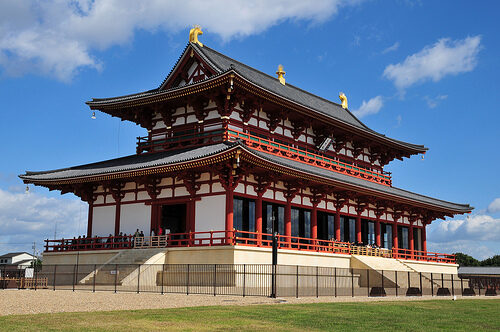On the outskirts of Nagoya is one of the major battlefields of the Samurai era, Nagakute. Like many of the greater samurai battles, the lead up to the actual battle of Nagakute is a long and complicated matter.
It was 1584. The first of the national unifiers, Lord Oda Nobunaga had been assassinated just 2 years before.Now the fate of the country rested in the hands of the few, fighting for Nobunaga’s legacy. The struggle to succeed him came down to his most able general, Toyotomi Hideyoshi, and to his nearest rival, Nobunaga’s second son, Nobukatsu, who had sought the support of Tokugawa Ieyasu. Both armies met at Komaki, north of modern day Nagoya City where Tokugawa
Ieyasu held the small castle. The two armies, Toyotomi’s 40,000 against the combined 18,500 Tokugawa / Oda troops faced off against each other with very little action until a number of the Toyotomi units, realizing that Ieyasu’s stronghold, Okazaki Castle in Mikawa, was under guarded while he and his men were at Komaki, and decided to go around the Oda-Tokugawa forces and attack Okazaki.

Lead by Ikeda Tsuneoki and his 6,000 men, a large contingent consisting of the 17 year old son of Hideyoshi, Hidetsugu and 8,000 samurai, supported by another 6,000 under the command of Mori Nagayoshi and Hori Hidemasa set out for Mikawa.

(Ikeda Tsuneoki)
The plan was to make quick hit and run attacks on the smaller castles and fortresses along the way so as not to impede their advance to Okazaki, however, Ikeda was detained when attacking the castle at Iwasaki. (Having been shot off his horse he launched a full scale attack on the fort, wasting precious time and resources!)
The attackers were then forced to backtrack as the Tokugawa moved on them, thusbeginning the Battle of  Nagakute proper.
Nagakute proper.
Hideyoshi had moved his forces to Hakusanmori in present day Owariasahi, and were decimated by a surprise attack from the Tokugawa. Hideyoshi’s son only barely managing to escape!
Ikeda’s men fired on the Tokugawa vanguard Ii forces, followed closely by the Tokugawa main forces. Another of Hideyoshi’s units waited hidden near Nagakute to flank the main opposition, however the Tokugawa avoided the flanking maneuver and turned the tables on the Toyotomi troops. A number of the Toyotomi generals were slain, and on the site of the battle’s memorial museum, Ikeda lost his head. Following the skirmish, Toyotomi reinforcements arrived, but soon pulled out and returned to their castle at Osaka, as the Tokugawa also quietly withdrew. The result of the battle is seen as somewhat of a stalemate despite the losses faced by the Toyotomi.
The starting point to see the battlefield could well be the castle at Komaki, however, the Kosenjo (Battlefield) Park in Nagkute, site of the most fierce fighting, is recommended. The small park features a memorial museum, with a rotating series of displays, admittedly some being better than others, explaining the battle.

As mentioned, Ikeda Tsuneoki was killed on this site, and on the tree covered knoll above the museum is a memorial gravesite. The battlefield stretches both north towards Komaki, and south to Iwasaki from this park, but here was where the bulk of the fighting took place.

The area is littered with historical sites, including head mounds (where enemy heads were buried) samurai general campsites, and special memorial markers attesting to the scale and significance of the battle. Maps and walking route information, much of which are in English, can be obtained free from the museum.
Nagakute City has also made many signs and markers in English too, making it easy to understand and navigate the area. One recommended site is the National Monument, Iroganeyama Historical Park, about two kilometers from the museum.

The hill in the middle of the park was where Ieyasu set camp. The rocks on which he is said to have covered in tiger skins and sat upon to direct the battle are still there, and a fortress-style lookout tower has been built to provide a fine view of the entire battlefield area, despite Komaki Castle being hidden from view by a nearby factory complex.

Nagakute was a large and bloody battle. Today it is an interesting and exciting battlefield, and at times a little spooky too. Locals often claim to see the ghosts of the departed samurai wandering the old battlegrounds. Maybe you will too.
